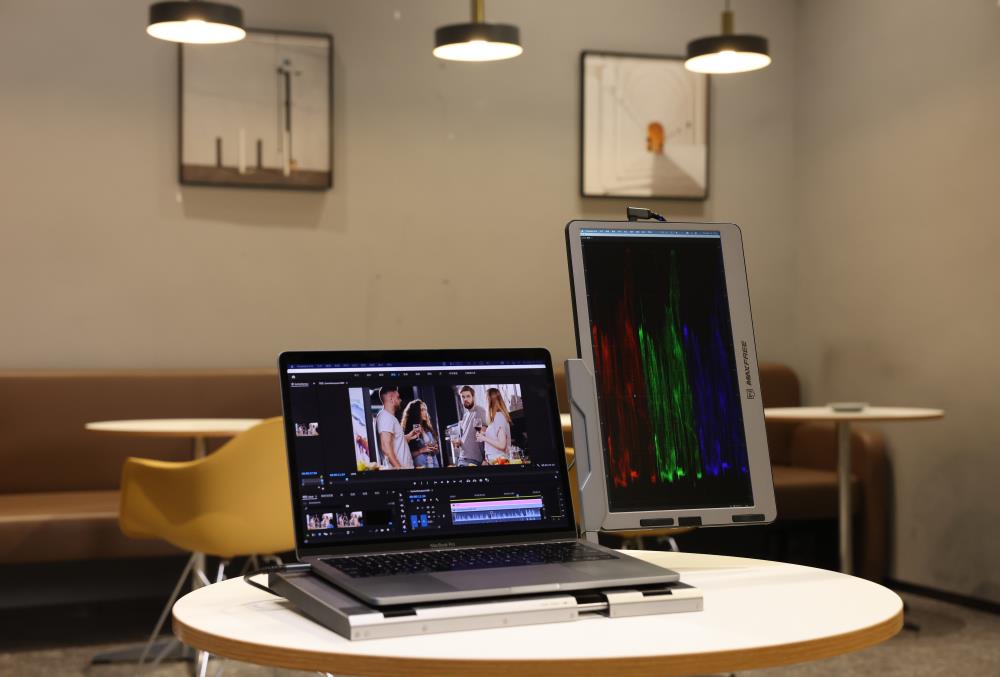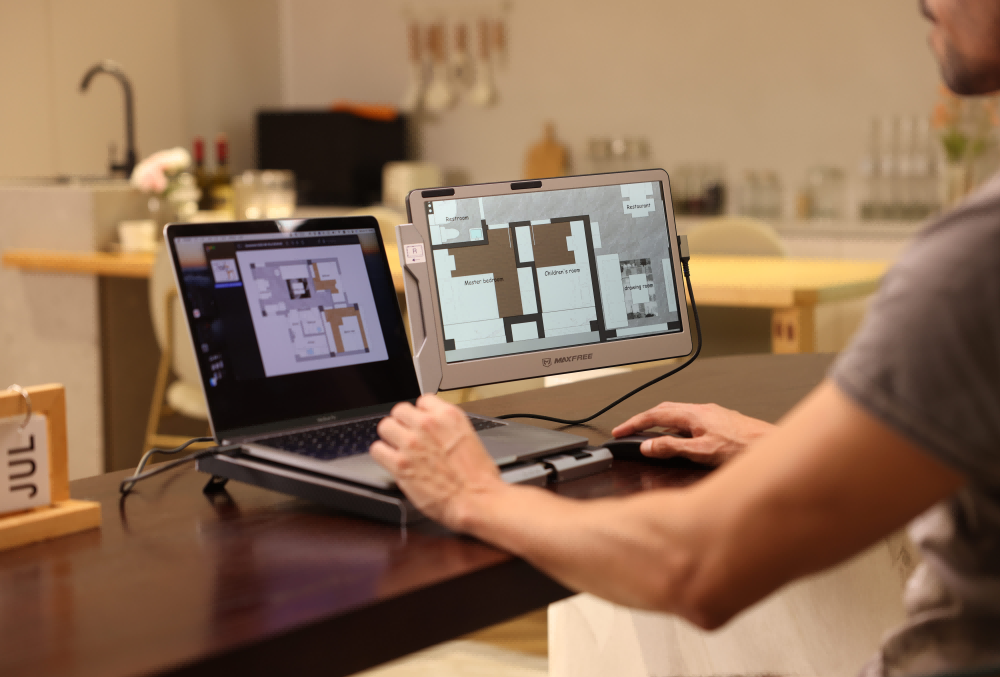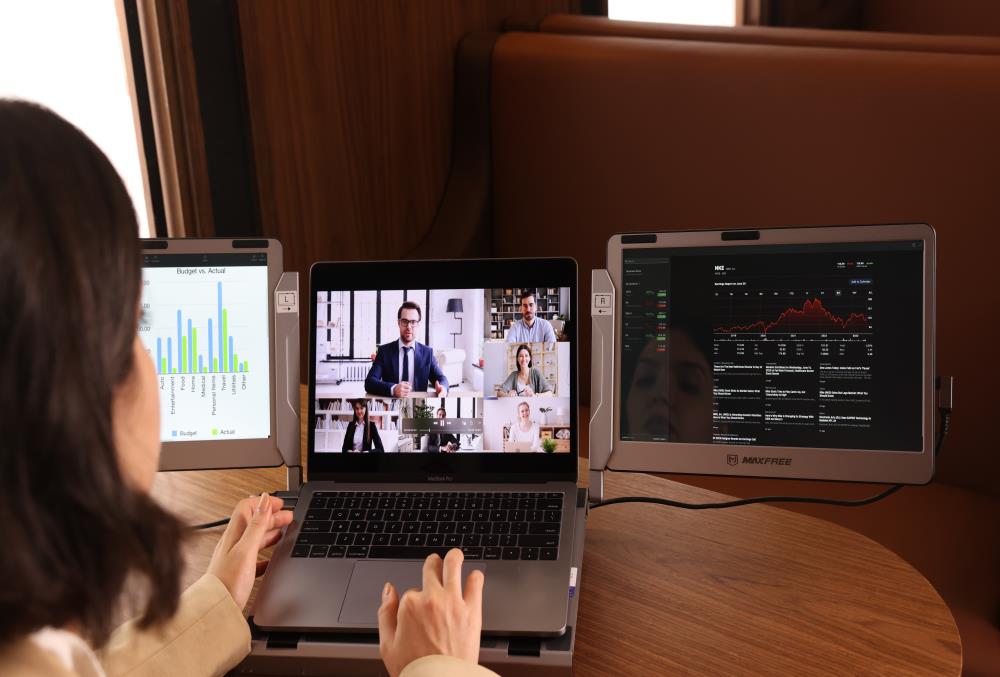Introduction
Connecting a monitor to a computer/laptop or CPU is still complicated for many people, especially when they want their desired resolution and computer prowess. Here's where monitor cables are helpful to connect your PC or laptop to displays. They help improve the bandwidth, speed, latency, and compatibility. But you may struggle with finding the right monitor cable types for you.
Here, we will explain some common types of monitor cables, their importance, and how to find the best match for your needs. So, without a delay, let's have a look.
Common Monitor Cable Types
Knowing the difference between every display connection available helps you decide which one to choose from various types of monitor cables. But here are our comprehensive computer monitor cable types and the ones primarily used on VCRs, laptops, game consoles, and set-top boxes to help you make an informed decision.
1.HDMI cables
HDMI (or High-Definition Multimedia Interface) cables are mainstream audio and video transmission cables used on game consoles, consumer TVs and monitors, and DVD and Blu-Ray players for a long time. They are also available in mini form (in some rare cases).
2.VGA cables
VGA (or Video Graphics Array) cables are an older analog standard of video-only data transmission cable, generally blue in color with fifteen pins. These cables gained distinction in the early '90s. As the market is now flooded with DVI, HDMI, and DisplayPort, VGA cables are only found on older monitors.
3.DisplayPort cables
DisplayPort cables are also popularly used for audio and video transmission and are commonly found on desktop monitors. Traditionally, they have offered greater bandwidth than HDMI cables, but that's not the case always. You can also find a Mini DisplayPort cable type, a miniature version of the full-size port community on laptops.
4.DVI cables
Unlike other cables, a DVI (or Digital Visual Interface) cable is a video-only cable and is typically found on older monitors, laptops, and desktop graphics cards. It is usually found in DVI-D and DVI-I formats, but earlier, it was available as Mini-DVI and Micro-DVI.
5.USB-C cables
USB-C cables are commonly found nowadays and are the most versatile monitor cable type. As USB cables have the support of the DisplayPort Alt Mode protocol, they can easily transmit audio, video, and data at the same time. In some cases, USB-C monitors can also send power to connected laptops. In contrast, portable USB-C monitors can be powered entirely by a single USB-C from the host device.
6.Component
The components are red, green, and blue connectors included on monitors to provide a video connection type (analog) that's more capable than VGA. It can be helpful to connect older DVD players or cable set-top boxes.
7.Thunderbolt
Thunderbolt is a proprietary monitor cable. Until recently, Thunderbolt was restricted to Intel-based systems. Different versions of Thunderbolt used different connectors. While Thunderbolt 1 and 2 used Mini DisplayPort, Thunderbolt 3 and 4 use USB-C. Thunderbolt supports audio, video, and data and typically has the highest bandwidth of any monitor cable type.
8.Composite
Contrary to Component, Composite is an older and lower-resolution alternative. Composite monitor cables have three connectors: red, white, and yellow, and are typically used in VCRs, older game consoles, and set-top boxes.
Besides these above-listed options, other monitor cable types you may see included on some displays have either the legacy optical audio connector or the traditional USB-A ports to utilize the monitor as a USB hub.
Does the Choice of Monitor Cable Type Really Matter?
Making the right choice of monitor cable does impact your overall experience by improving audio quality, resolution, and refresh rate. Multiple factors like device compatibility, bandwidth, and resolution requirement count in selecting the best monitor cable types to connect the display with. Otherwise, either you'll face bandwidth limitations, or you'll be restricted by port options on the display and the source device.
|
Monitor Cables |
Best For |
|
HDMI |
Offers audio and video signal, best for TV to PC connections |
|
VGA |
Old, legacy video connector. Only to be used when nothing else is available |
|
DisplayPort (DP) |
Provides an audio and video signal and can transmit 144Hz up to 4K |
|
DVI |
Used for video only, perfect for older systems or for 144Hz at 1080p |
|
USB Type-C |
Newest audio, video, data, and power connector, best connection for laptops and mobile devices |
HDMI connectors are perfect for simultaneous transmission of audio and video without the need for additional audio connectors. It is best for Smart TV and PC users with audio and video signals for a seamless audiovisual experience.
VGA connectors are gradually becoming less common in today's technology landscape but are still prevalent. If your monitor has a VGA port, it can be a decent option when nothing else is available. However, it may deliver a different level of video quality than its counterparts.
DisplayPort connectors work best for users who value high-quality audio and video signals. In specific scenarios, they can even outperform HDMI on these metrics.
DVI connectors are for enthusiasts craving the highest refresh rates at 1080p. While they solely carry video signals, they have the advantage of seamlessly integrating with older systems, so if your setup's not the most up-to-date and you want the best refresh, DVI could be the one for you.
USB Type-C connectors excel in connecting many devices like laptops and smartphones to tablets and wireless chargers.
Thunderbolt cables act as USB-C for Apple device users.
While all these monitor cable types can deliver video to compatible monitors, they all have widely different capabilities. So, it's essential to select the suitable one to watch and play your content hassle-free on the source device.
Matching Cables to Monitors
Cables come in all shapes and sizes, but how do you know which ones you need? Here are the guidelines and factors to consider for selecting a suitable cable for your monitor.
#1. Select male or female: With male, the connection is meant with the protruding pins, while the female connection has the notches that match the corresponding male connection.
#2. Analog or digital signal: You must know your preferences whether you want to connect your desktop to a monitor or laptop to a beamer. Then, you can choose between analog and digital connections.
- Analog connections: VGA, DVI-A, and DVI-I (also digital)
- Digital connections: HDMI, DisplayPort, Thunderbolt, USB c, DVI-D, and DVI-I (also analog).
#3. Pick a cable that meets your needs: Depending on whether you want to play games in 4K, quickly transfer data, or make a wired connection, selecting the proper connection is crucial.
- HDMI: Supports up to 4K UHD resolution
- DisplayPort: Supports up to 8K (2 monitors with a 4K UHD) resolution
- VGA: Supports up to 1080p full HD resolution
- USB C: Charge, forward data, and connect the monitor via one port. Supports up to 4K UHD resolution
- Thunderbolt 3: Charging, data transfer, and connecting the monitor via one port. Supports up to 4K UHD resolution.
- DVI: Only a video cable with no audio support. Available in 5 different types.
- DVI-A: Analog connection supporting lower resolutions (1920x1200 x 60 Hz)
- DVI-I (single link): Digital and analog connection supporting lower resolutions (1920x1200 x 60 Hz)
- DVI-I (dual-link): Digital and analog connection supporting higher resolutions (2560x1600 x 60 Hz )
- DVI-D (single link): Digital connection supporting lower resolutions (1920x1200 x 60 Hz)
- DVI-D (dual-link): Digital connection supporting higher resolutions (2560x1600 at 60 Hz)
Note: For Maxfree products, we suggest using USB-C cables for the best performance.
The Bottom Line
It is essential to embrace the importance of choosing the right monitor cable types as most monitors have various inputs available, and even the PC/laptop uses different outputs. Hence, picking the best one is tricky. But for that, you must check your display ports and the source equipment to find the one that best fits your needs. We have discussed multiple types of monitor cables to familiarize you with one of them. You must make informed choices when selecting monitor cables. Considering the Maxfree products, you can use USB-C cables for superior performance.




Leave a comment
This site is protected by reCAPTCHA and the Google Privacy Policy and Terms of Service apply.